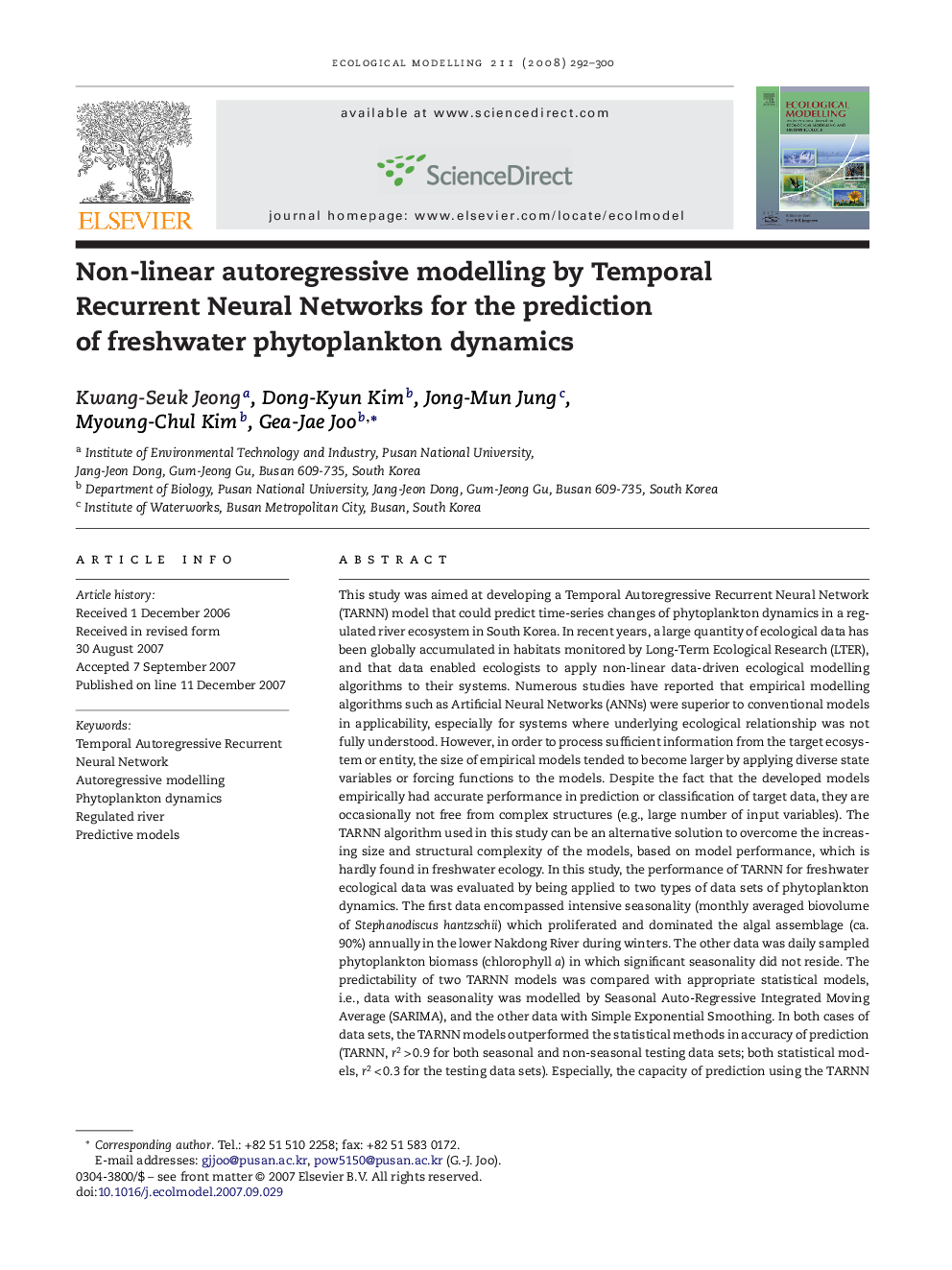| Article ID | Journal | Published Year | Pages | File Type |
|---|---|---|---|---|
| 4378123 | Ecological Modelling | 2008 | 9 Pages |
Abstract
This study was aimed at developing a Temporal Autoregressive Recurrent Neural Network (TARNN) model that could predict time-series changes of phytoplankton dynamics in a regulated river ecosystem in South Korea. In recent years, a large quantity of ecological data has been globally accumulated in habitats monitored by Long-Term Ecological Research (LTER), and that data enabled ecologists to apply non-linear data-driven ecological modelling algorithms to their systems. Numerous studies have reported that empirical modelling algorithms such as Artificial Neural Networks (ANNs) were superior to conventional models in applicability, especially for systems where underlying ecological relationship was not fully understood. However, in order to process sufficient information from the target ecosystem or entity, the size of empirical models tended to become larger by applying diverse state variables or forcing functions to the models. Despite the fact that the developed models empirically had accurate performance in prediction or classification of target data, they are occasionally not free from complex structures (e.g., large number of input variables). The TARNN algorithm used in this study can be an alternative solution to overcome the increasing size and structural complexity of the models, based on model performance, which is hardly found in freshwater ecology. In this study, the performance of TARNN for freshwater ecological data was evaluated by being applied to two types of data sets of phytoplankton dynamics. The first data encompassed intensive seasonality (monthly averaged biovolume of Stephanodiscus hantzschii) which proliferated and dominated the algal assemblage (ca. 90%) annually in the lower Nakdong River during winters. The other data was daily sampled phytoplankton biomass (chlorophyll a) in which significant seasonality did not reside. The predictability of two TARNN models was compared with appropriate statistical models, i.e., data with seasonality was modelled by Seasonal Auto-Regressive Integrated Moving Average (SARIMA), and the other data with Simple Exponential Smoothing. In both cases of data sets, the TARNN models outperformed the statistical methods in accuracy of prediction (TARNN, r2Â >Â 0.9 for both seasonal and non-seasonal testing data sets; both statistical models, r2Â <Â 0.3 for the testing data sets). Especially, the capacity of prediction using the TARNN algorithm was not decreased by the absence of seasonality. Through the presented results, it can be assumed that TARNN can process non-linear autoregressive analysis successfully for ecological data. The development of non-linear autoregressive models for phytoplankton prediction can suggest more efficient direction for water quality management approaches of freshwater systems with long-term database. A real-time forecasting system for algal proliferation, one of the state-of-the-art predicting systems, can be identified using the linkage between the modelling technique and telemetry.
Related Topics
Life Sciences
Agricultural and Biological Sciences
Ecology, Evolution, Behavior and Systematics
Authors
Kwang-Seuk Jeong, Dong-Kyun Kim, Jong-Mun Jung, Myoung-Chul Kim, Gea-Jae Joo,
